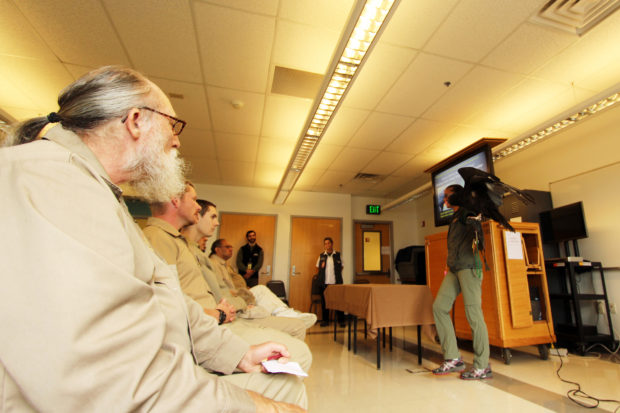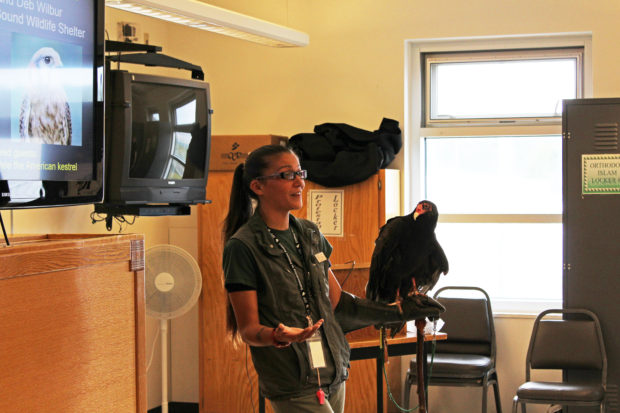Written by SPP Liaison and Classification Counselor Shawn Piliponis.
On September 8, 2016, Larch Corrections Center (LCC) reached another historical milestone as it kick-started a new apiary (beehive) program by hosting a class to educate participants about bees and beekeeping.

Larch Staff and students enjoying the Bee Thinking lecture. Photo by Emily Passarelli.
Inmates and staff who participated were genuinely interested in learning about bees and beekeeping, but were understandably concerned about the potential of being stung by bees. Rebekah Golden and Gabriel Quitslund from Bee Thinking in Portland, Oregon, taught how bee colonies work, which alleviated a lot of the initial fear, and those who participated walked away feeling more educated and comfortable about LCC’s new beekeeping program.

Bee Thinking’s Rebekah Golden teaches a class of staff and incarcerated students about beekeeping. Photo by Emily Passarelli.
“I want to help the offender population think outside the box by showing a variety of employment opportunities available to the offenders upon release,” said Classification Counselor Shawn Piliponis, LCC’s sustainability liaison. “My primary goal for this program is to coordinate with other organizations like SPP and Bee Thinking to provide official Beekeeper Apprentice and Master Beekeeper certifications to the offender population before they release.”
It was a voluntary class, and an instant hit among all who attended. A total of 11 inmates and 11 staff, volunteers, and contractors participated, and already there is demand for more classes from both staff and inmates.

Staff get a closer look at honey comb. Photo by Emily Passarelli.
Shawn Piliponis coordinated with the Sustainability in Prisons Project (SPP)-Evergreen staff Kelli Bush, Emily Passarelli, and Sadie Gilliom to arrange and sponsor the beekeeping class for LCC inmates and staff. The class was taught by Rebekah Golden and Gabriel Quitslund from Bee Thinking in Portland, Oregon. Rebekah has worked with bees for eight years in university research labs, her own apiary, Bee Thinking’s apiaries, and other community organizations. Gabriel is a sales manager for Bee Thinking who has a vast knowledge of bees and issues related to beehives such as disease, colony collapse, and pests.

Bee Thinking’s Rebekah Golden and Gabe Quitslund help CC2 Shawn Piliponis set up Larch’s new beehive. Photo by Emily Passarelli.
The new beekeeping program at LCC will start with a beehive donated from the beekeeping program at Stafford Creek Corrections Center (SCCC).



















































